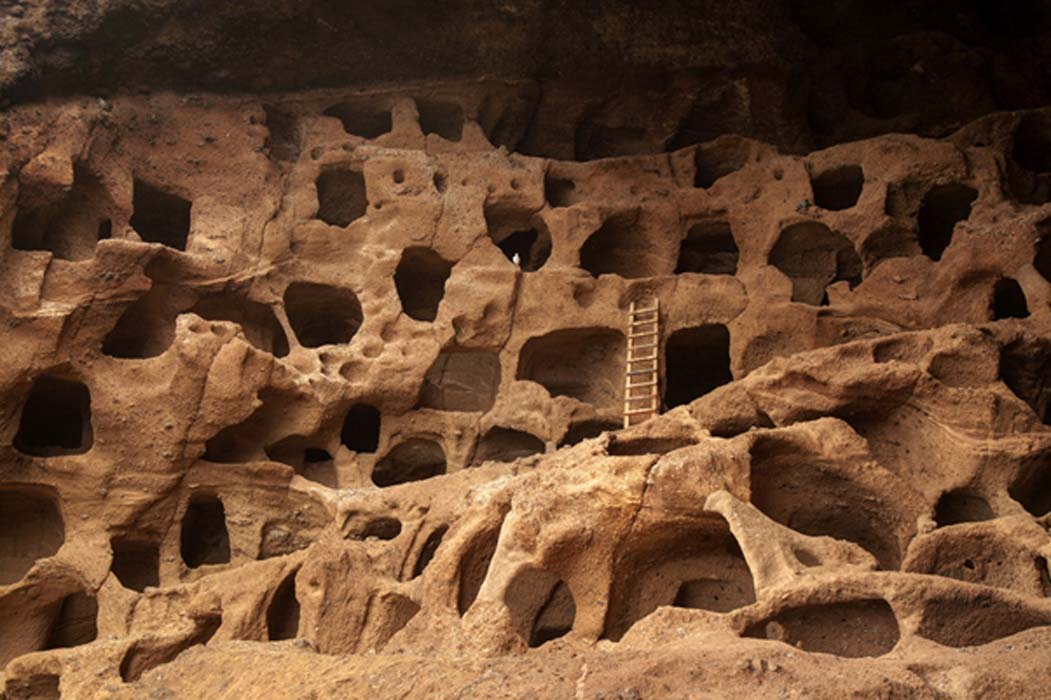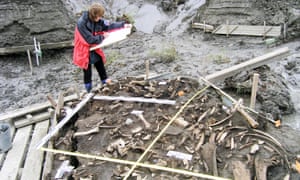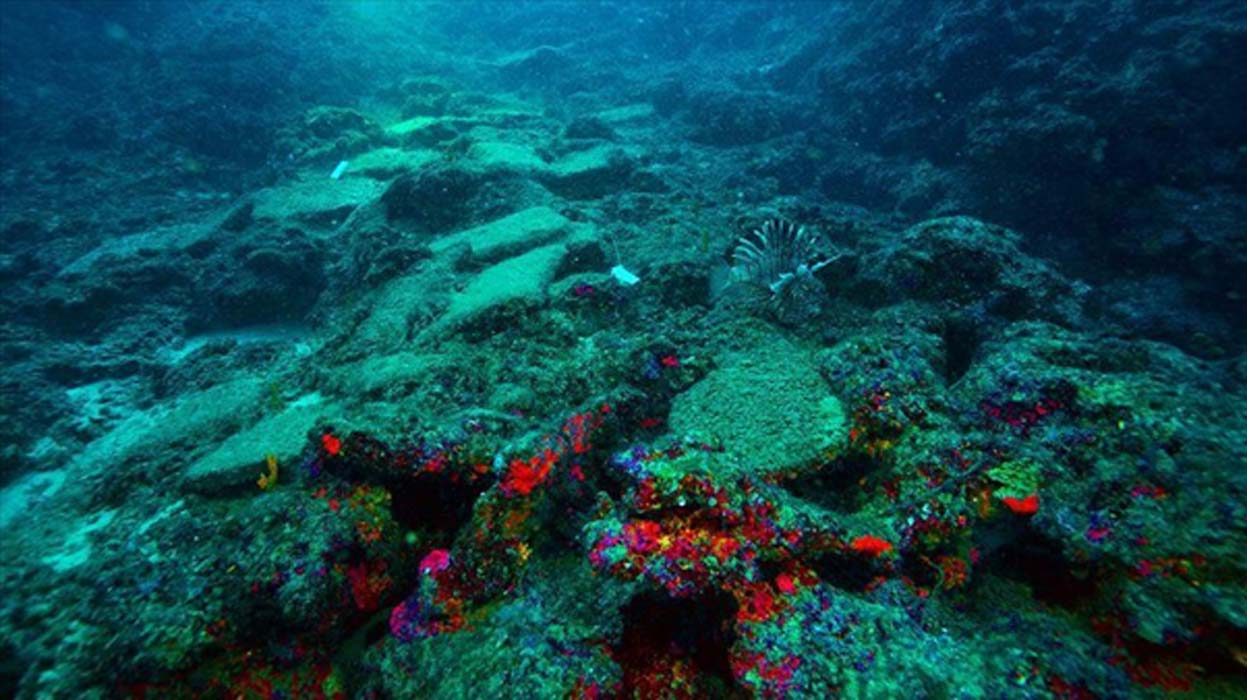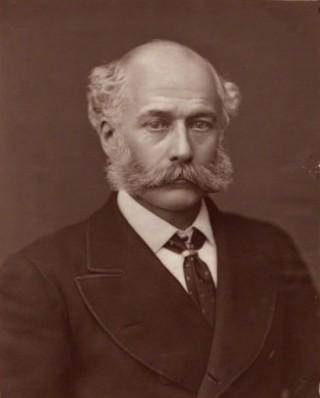Françoise Gilot Recalls Her Life with the Artist
via Arts and Letters Daily: Françoise Gilot and Carlton Lake in Literary Hub

I went to a little village called Fontès, near Montpellier, which was then in the Free Zone—not occupied by the Germans—to spend my vacation with Geneviève. While I was there, I passed through one of those crises young people sometimes experience in the process of growing up. Picasso wasn’t the cause of it; it had been coming on for some time before I met him. It was a kind of mental stocktaking brought on by the conflict between the life I had led up until then and the vision I had of the kind of life I should be leading.
Continue reading
==============================
via Ancient Origins by Alicia McDermott

Cenobio de Valeron, Gran Canaria Source: Tamara Kulikova / Adobe Stock
The strange appearance of the cavities that comprise the immense Cenobio de Valeron archaeological site in the Canary Islands caused confusion for Spanish colonizers and early scholars. They misunderstood the odd-looking site on Gran Canaria for a pre-Hispanic monastery. And though the true purpose of Cenobio de Valeron is arguably more worldly than spiritual, even today people are still amazed by the unique appearance and history behind the cavities hewn out of volcanic rock by the hands of the island’s indigenous people.
Continue reading
==============================
via the Guardian by Nicola Davis

The archaeological site near the Yana River in Siberia where two 31,000-year-old milk teeth were found. Photograph: Elena Pavlova/Nature
DNA analysis reveals hardy group genetically distinct from Eurasians and East Asians
It was cold, remote and involved picking fights with woolly mammoths – but it seems ancient Siberia 30,000 years ago was home to a hardy and previously unknown group of humans. Scientists say the discovery could help solve longstanding mysteries about the ancestors of native North Americans.
While it is commonly believed the ancestors of native North Americans arrived from Eurasia via a now submerged land bridge called Beringia, exactly which groups crossed and gave rise to native North American populations has been difficult to unpick.
Now scientists say they might have found some answers to the conundrums.
Continue reading
DNA profiling being used for something other than catching criminals!
==============================
via Boing Boing by David Pescovitz
While shooting a scene in "Star Wars: Episode V – The Empire Strikes Back," the late Peter Mayhew (Chewbacca) talks to Harrison Ford (Han Solo) in his own Cockney English so Ford can respond more naturally.
Of course Chewie's grunts and growls – an amalgam of bears, lions, badgers, seals, and a walrus – were overdubbed later. (More on that in this post.)
(via Laughing Squid)
==============================
via Interesting LIterature
‘The Boarding House’ is one of the 15 stories that make up James Joyce’s 1914 collection of short stories, Dubliners. As we’ve remarked before, Dubliners is now regarded as one of the landmark texts of modernist literature, but initially sales were poor, with just 379 copies being sold in the first year (famously, 120 of these were bought by Joyce himself). You can read ‘The Boarding House’ here before proceeding to our summary and analysis of the story.
Continue reading
==============================
via the OUP blog by Matthes Selimann

HMS Illustrious on Loch Long by Pepe Hogan. Public sector information licensed under the Open Government Licence v3.0. via Ministry of Defense.
How do you write about an historical topic when the principal sources that would reveal what happened and why no longer exist?
Good case studies exist in the Royal Navy’s efforts in the run-up to the First World War to reform the spirit ration (the alcohol allocated to members the Royal Navy) and to suppress homosexuality. In both these instances, policies were in place and actions taken, but there is a near void in the government records.
This may be deliberate. The Admiralty Record Office Digests, the huge leather-bound volumes in which all of the files sent for safe-keeping to the Navy’s central document repository are carefully listed, contains detailed and specific references to numerous important papers with a bearing on what was then euphemistically termed “unnatural crime”. So there can be no doubt that substantial paperwork on this topic once existed. Moreover, some of the annotations in the digests strongly imply the Navy intended to retain the most important of these files for posterity.
Yet, none of them are available today, having been ‘weeded out’ by the end of the 1950s. Accidents do happen and people make mistakes, but it is hard to avoid the impression that these documents are no longer present because someone did not want them to survive.
Continue reading
==============================
via Ancient Origins by Ed Whelan

The 3,600-year-old shipwreck found in the Aegean Sea. Credit: Anadolu Agency
Archaeologists have announced the discovery of a shipwreck loaded with copper ingots in the Aegean Sea that dates back 3,600 years, making it the oldest shipwreck ever found. It is the most important finding in underwater archaeology in at least the last decade.
According to Anadolu Agency, the discovery was made by a team of experts from the Underwater Research Center of the Akdeniz University (UA) in Turkey.
It was found in 160 feet (50m) of water off the western coast of Antalya, a well-known tourist centre. The wreck is over 50 feet long (15m) and was made out of wood. Despite its age, much of the ship is still intact and still carries its precious cargo.
Continue reading
==============================
via Boing Boing by David Pescovitz
"Just a pair of hands -- and a whole lot of clever imagination."
(via Juxtapoz on Instagram)
==============================
via Interesting Literature
On a well-known fairy tale
‘The Princess and the Pea’ is one of the shortest of the classic fairy tales. It also manages to be simultaneously one of the most straightforward and one of the most baffling. It’s straightforward because its plot is so simple, but it’s almost too simple. What are we to make of this tale of royal oversensitivity to bed-dwelling vegetables? Does the fairy tale (if it even is strictly a fairy tale at all) have any discernible moral?
Continue reading
==============================
via The Naational Archives Blog by Sally Hughes

Joseph Bazalgette
Thursday 28 March [2019] marks the bicentenary of the birth of Joseph Bazalgette – one of the most illustrious Victorians, but someone you may never have heard of.
Think of Charles Darwin, Charles Dickens, Mrs Beeton, Alexander Graham Bell, Mary Seacole or Benjamin Disraeli – they all made their mark but it is the sound you hear every time you flush that is Joseph Bazalgette’s legacy. Bazalgette was the Chief Engineer with the London Metropolitan Board of Works and the man responsible for creating the sewerage system which still serves London today. Without Bazalgette life in London would have been a lot more pungent (even noxious), and you might well have died from typhoid or cholera.
Continue reading
No comments:
Post a Comment